

James Wong
2026 Audi SQ5 review: Quick drive
5 Days Ago
The updated CX-8 now offers a luxurious six-seat flagship like its CX-9 sibling. With a gutsy diesel and plush cabin, it's rather good.
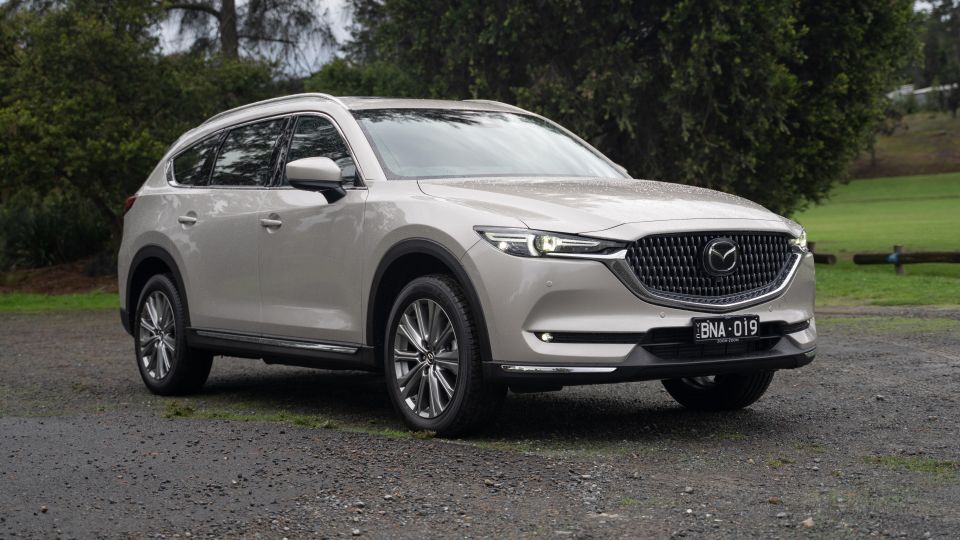


Marketplace Editor
New from
$39,910
excl. on-roads

Marketplace Editor
New from
$39,910
excl. on-roads


Marketplace Editor
New from
$39,910
excl. on-roads

Marketplace Editor
New from
$39,910
excl. on-roads
Quickly see how this car stacks up against its competition. Select any benchmark to see more details.
Where expert car reviews meet expert car buying – CarExpert gives you trusted advice, personalised service and real savings on your next new car.
The Mazda CX-8 is the oft-forgotten sibling of the popular CX-5 mid-size SUV and the larger CX-9. It doesn’t deserve to be.
While the CX-9 gets all the glory Down Under being the biggest, baddest Mazda you can buy, the CX-8 actually serves as the company’s flagship in other parts of the world, including its home market of Japan.
It also separates itself from the CX-9 by offering diesel power, a combination that’s still quite popular with buyers in the segment.

For 2021 the Mazda CX-8 gained a number of changes, including a sporty new Touring SP grade as well as the more luxurious version on test – the 2021 Mazda CX-8 Asaki LE.
With quilted nappa leather, a six-seat layout incorporating second-row captain’s chairs, and a new 10.25-inch infotainment system reserved for higher grades, the top-shelf CX-8 is clearly trying to bridge the gap between mainstream and premium.
Does it succeed, or are you better off with a CX-9?
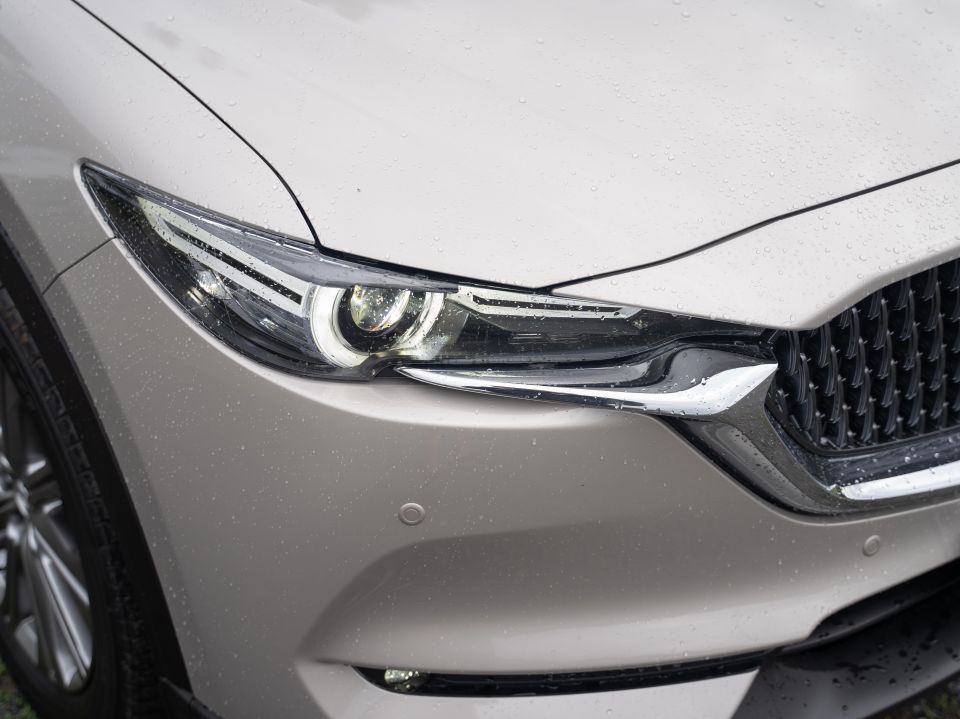
The vehicle on test here starts at $69,290 plus on-road costs, making it the most expensive CX-8 on sale in Australia. Mazda’s website quotes from $71,985 drive-away.
Pricing for the wider 2021 Mazda CX-8 line-up is as follows:
All prices exclude on-road costs
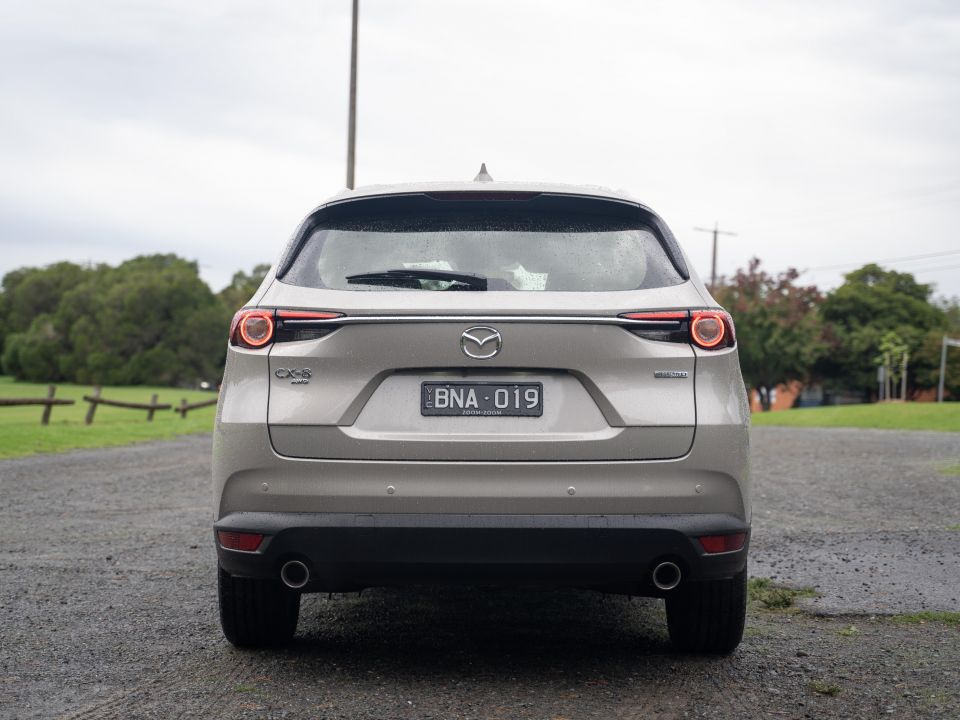
Key rivals for the top-spec CX-8 include the Hyundai Santa Fe Highlander Diesel AWD ($65,200), the Kia Sorento GT-Line Diesel AWD ($67,290 drive-away), Mazda’s own CX-9 Azami LE ($73,875), and the new-generation Toyota Kluger Grande (from $68,900).
If you’re looking for second-row captain’s chairs from other brands, only the full-size Hyundai Palisade Highlander (from $71,000) offers an alternative to the Mazdas, as Kia doesn’t offer the six-seat Sorento to Australia like it does in Korea.
Beyond the core set of mainstream monocoque seven-seat family SUVs, there’s also smaller premium alternatives such as the Land Rover Discovery Sport R-Dynamic D165 S ($69,423) and Mercedes-Benz GLB250 4Matic ($73,900).
Like its CX-9 sibling, the CX-8 Asaki and Asaki LE offer space and equipment to larger premium SUVs like the Audi Q7, though the German seven seater starts at six figures ($103,300).
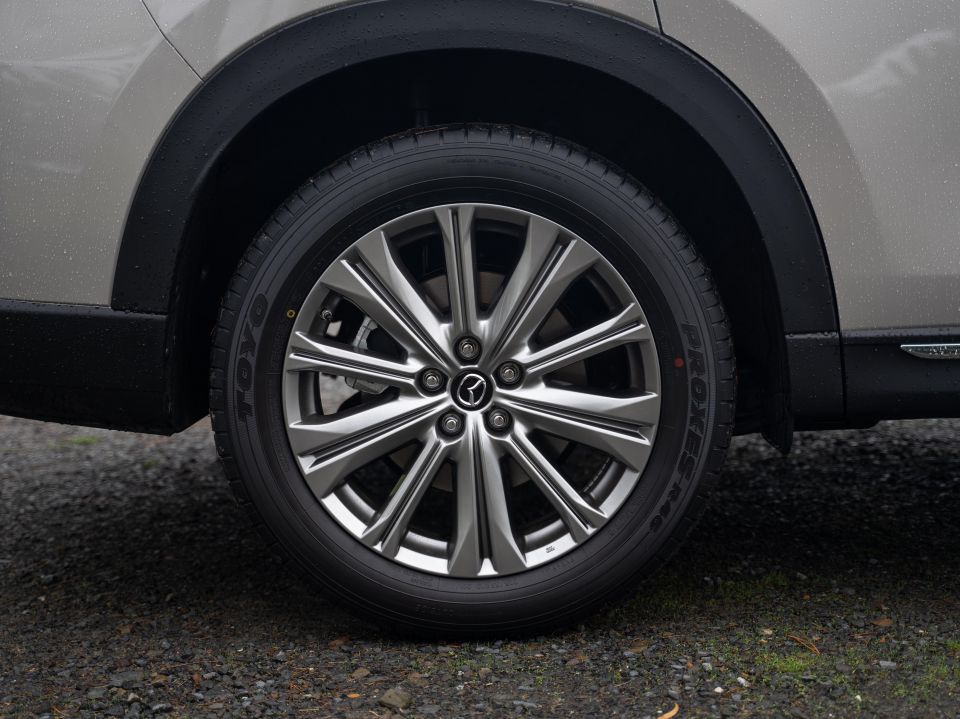
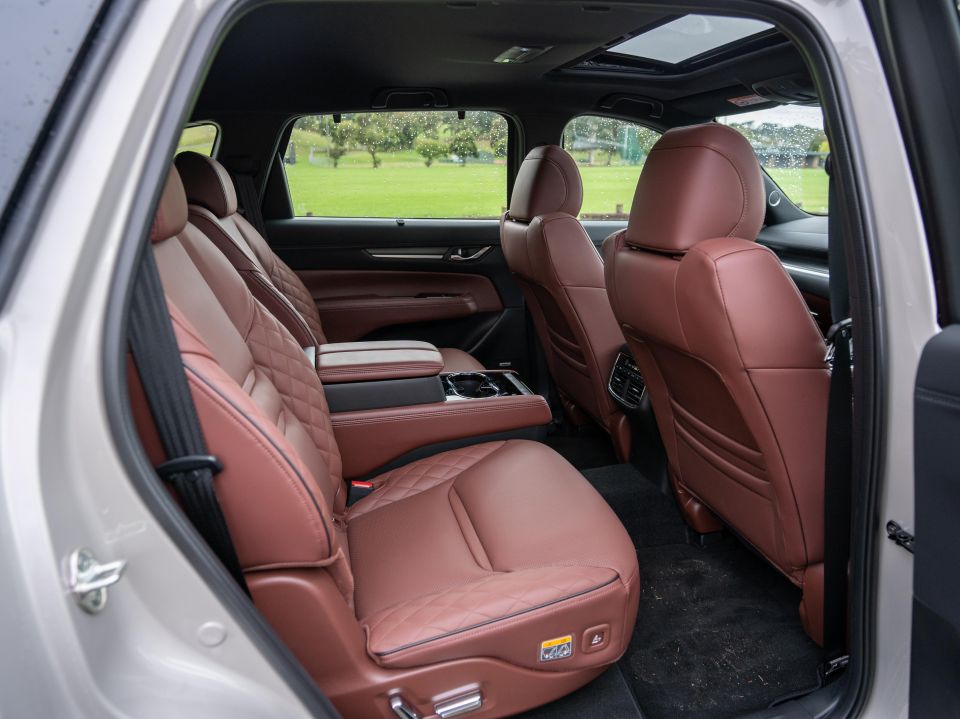
Buy your new car without the stress. It's fast, simple and completely free.

Great service from Travis and team, second time I have used this business would not hesitate to recommend them to anyone
Craig C.
Purchased a Ford Ranger in Sunshine Coast, QLD
CarExpert helped Craig save $7,224 on his Ford Ranger, now let us save you on your next new car.
Get your BEST priceThe flagship CX-8 Asaki LE gets the following exclusive equipment:

In seven-seat Asaki guise, the top-spec CX-8 also gets:
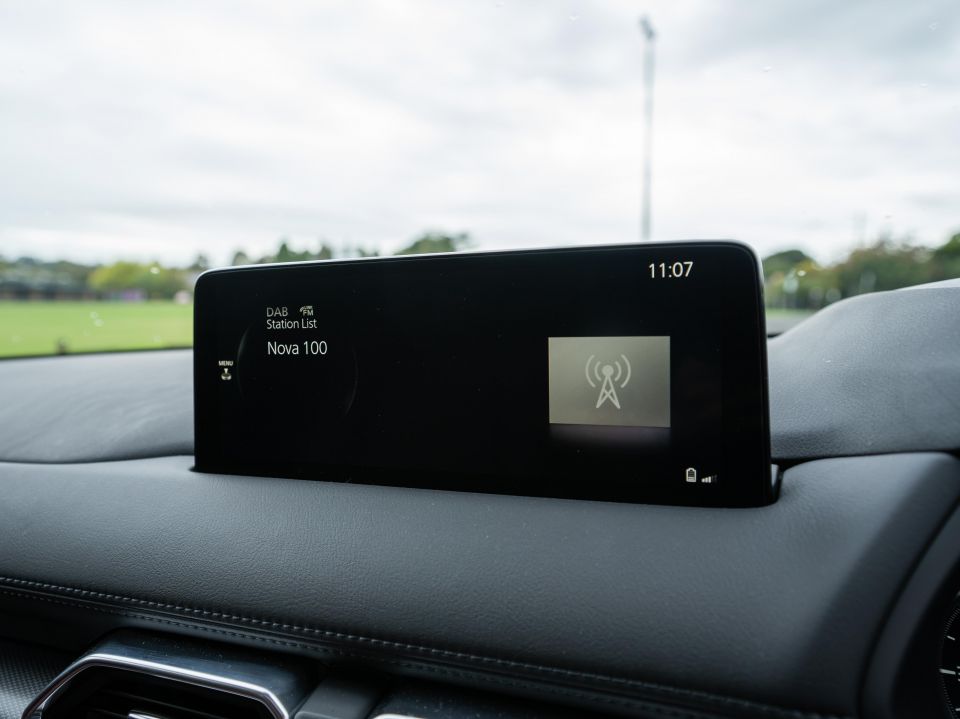
Features carried over from the lower GT specification include:
MORE: 2021 Mazda CX-8 price and specs
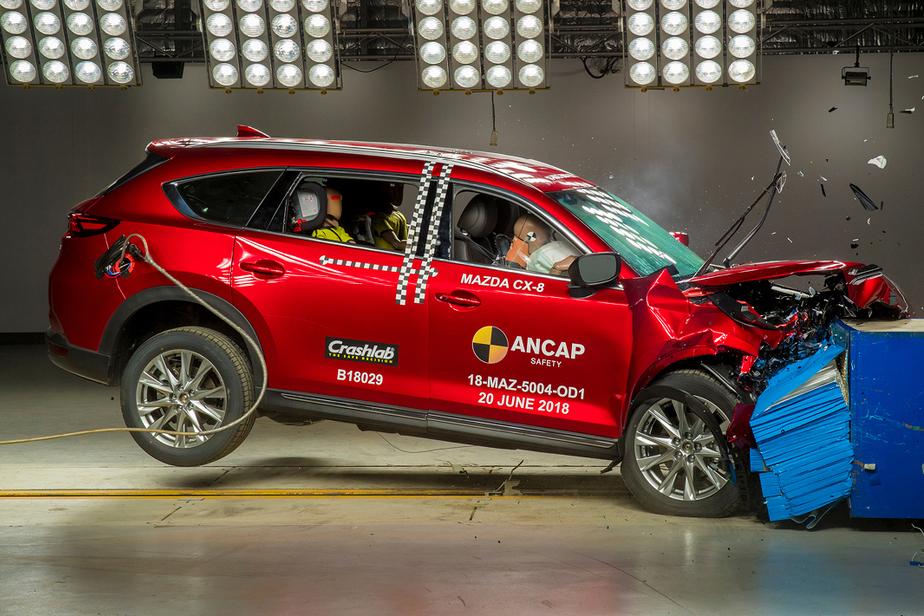
The CX-8 wears a five-star ANCAP safety rating based on testing carried out in 2018.
It scored 96 per cent in adult occupant protection, 87 per cent in child occupant protection, 72 per cent in vulnerable road user protection, and 73 per cent in safety assist.
All Mazda CX-8 models come standard with:
Higher-end models like our Asaki LE tester have front parking sensors and adaptive headlights.
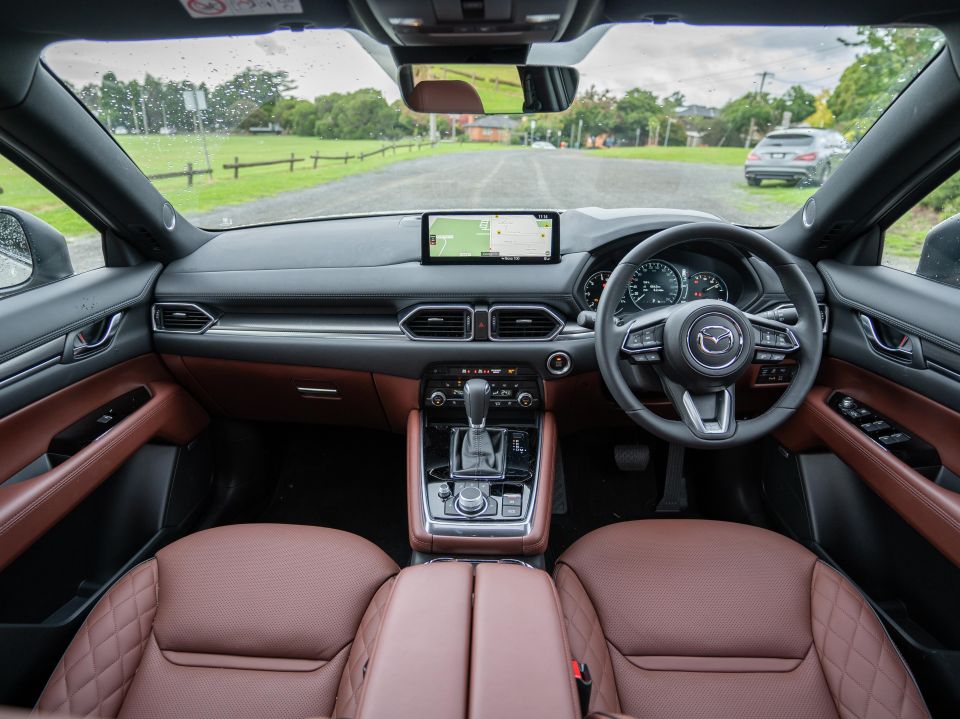
If you’re familiar with the cabin of the CX-5, the CX-8 offers few surprises.
That’s because the CX-8 is essentially a long-wheelbase, three-row CX-5, much like the Tiguan Allspace is to the Tiguan. A CX-5 ‘L’, if you will.
Up front you’ll find a cockpit layout which hasn’t changed much, bar the new 10.25-inch Mazda Connect infotainment system slowly rolling out across the line-up. In the case of the CX-5, CX-8 and CX-9, it’s strictly reserved for higher grades.
Perceived quality and ambience is very good. While some elements look a little dated, it has a Lexus-like vibe with solid build quality, an abundance of soft-touch materials and padded surfaces, as well as solidly-damped switchgear including knurled dials for the climate controls.
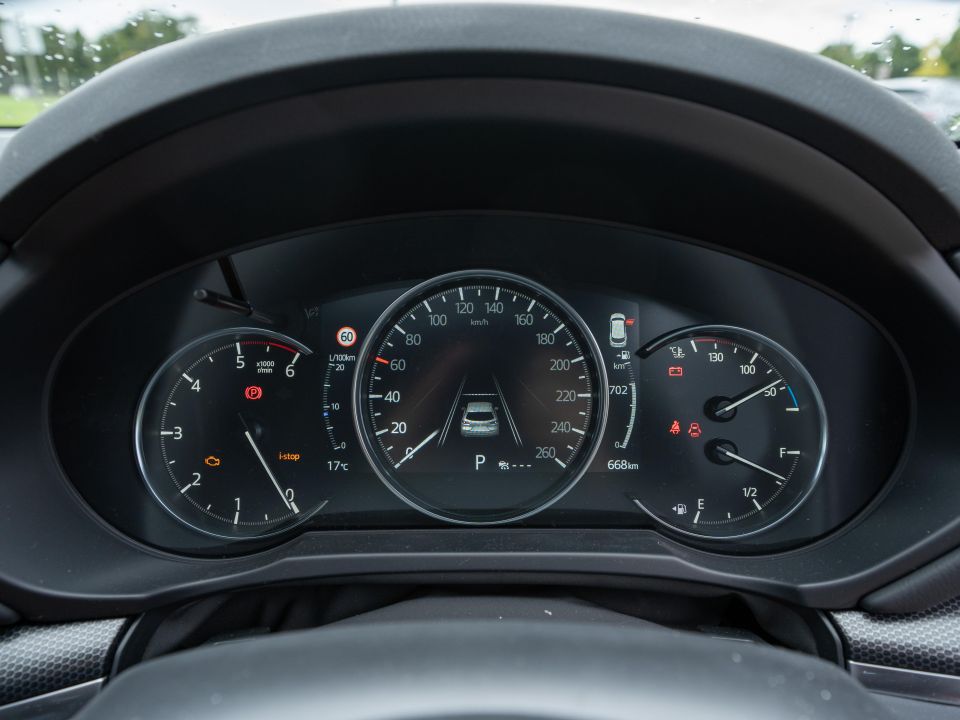
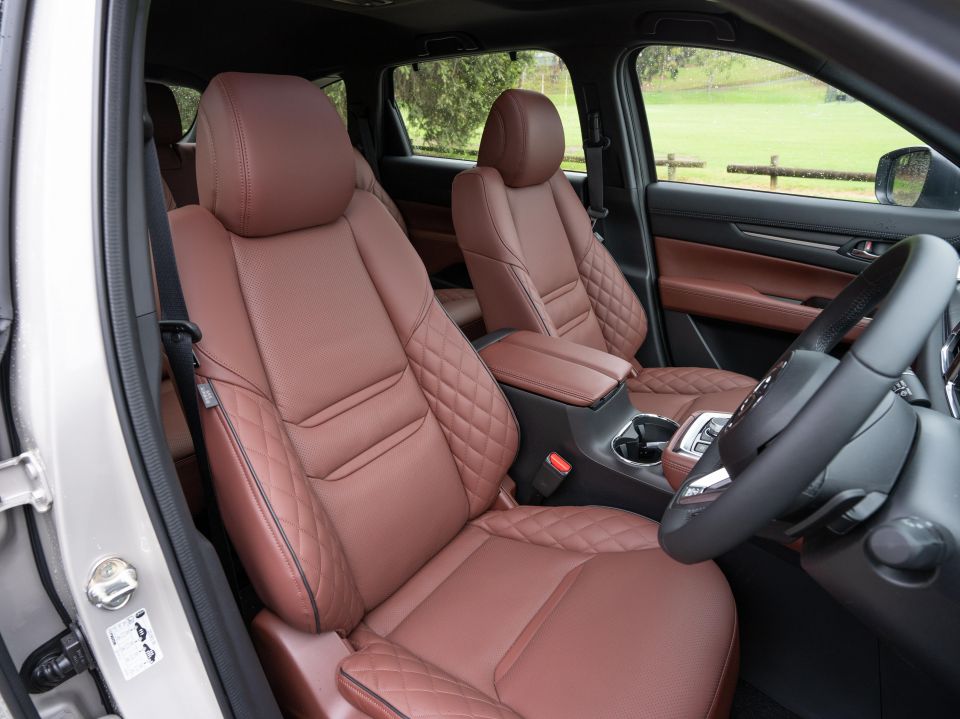
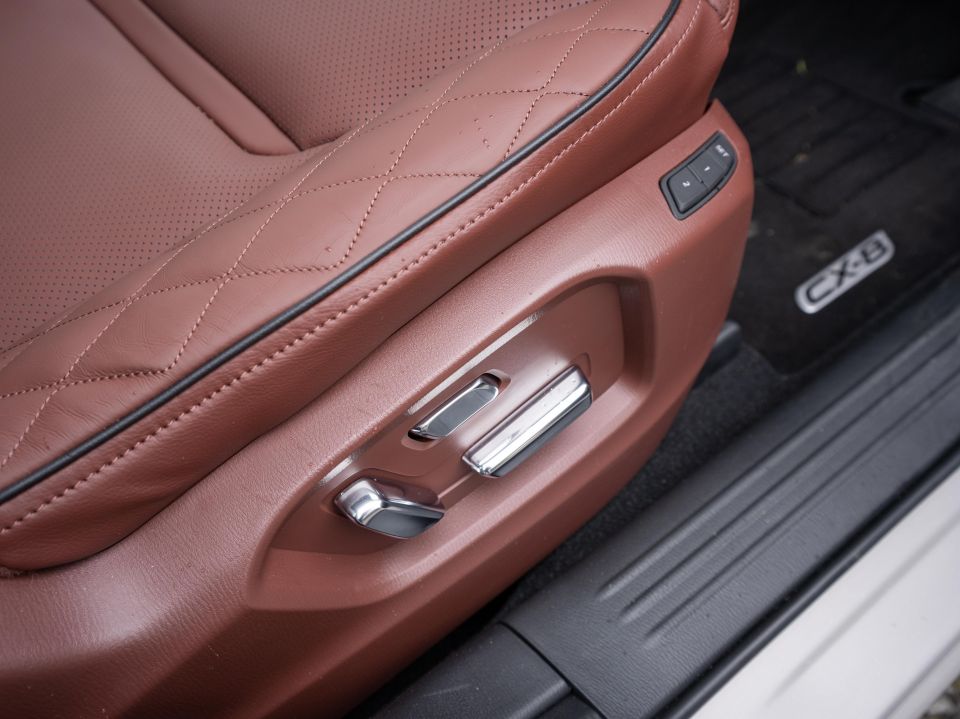
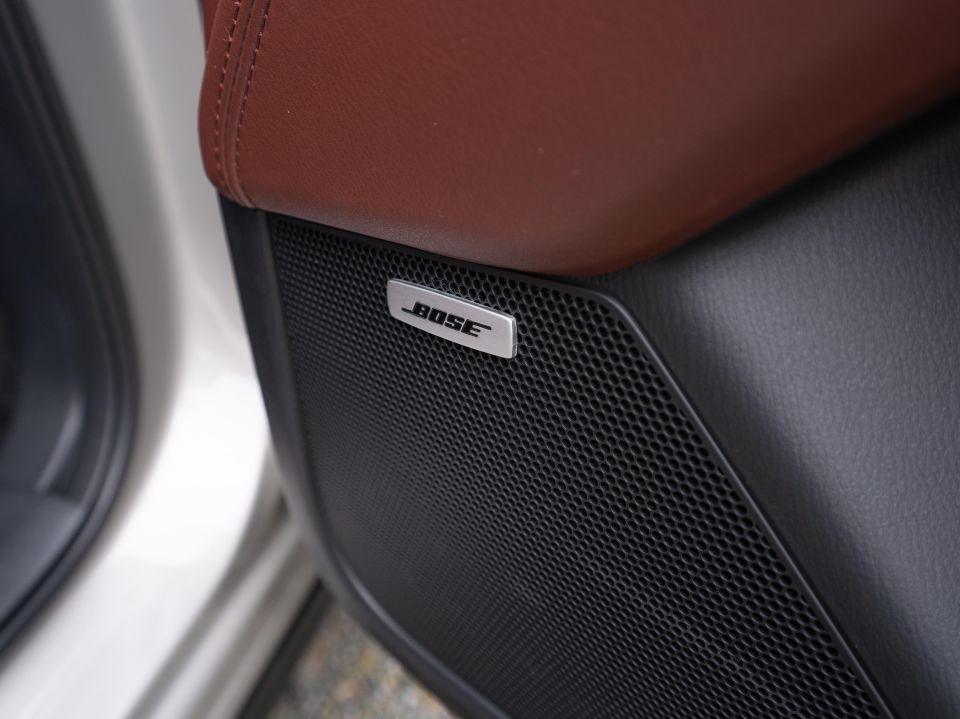
I’d go so far to say the CX-8’s cabin is better trimmed than the CX-9’s due to the padded and stitched leather dash and door tops, as well as a soft-touch mid-tier of the dash which aren’t featured on its larger sibling – befitting its flagship status in the Japanese domestic market.
Our CX-8 Asaki LE tester was specified with the Chroma Brown nappa leather with quilted bolsters, with Pure White leather available as an option. I find the latter less confronting, but at least there’s a choice – some buyers would prefer black, I know.
The new infotainment system is strictly controlled via the rotary dial on the centre console, no touchscreen anymore. It’s pretty easy to use and if you have Apple CarPlay or Android Auto hooked up using voice commands for most functions works fine.
Mazda’s new interface is much cleaner and has a BMW iDrive vibe to it, though the mapping skins still aren’t up there with the latest Hyundai/Kia software nor is it as attractive as the European stuff.
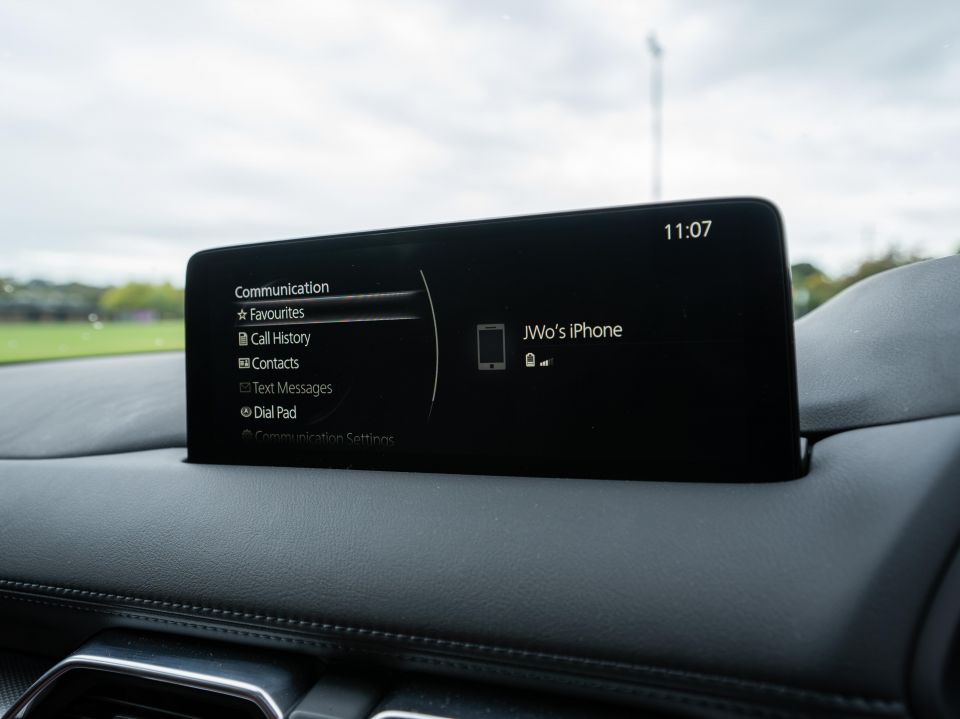
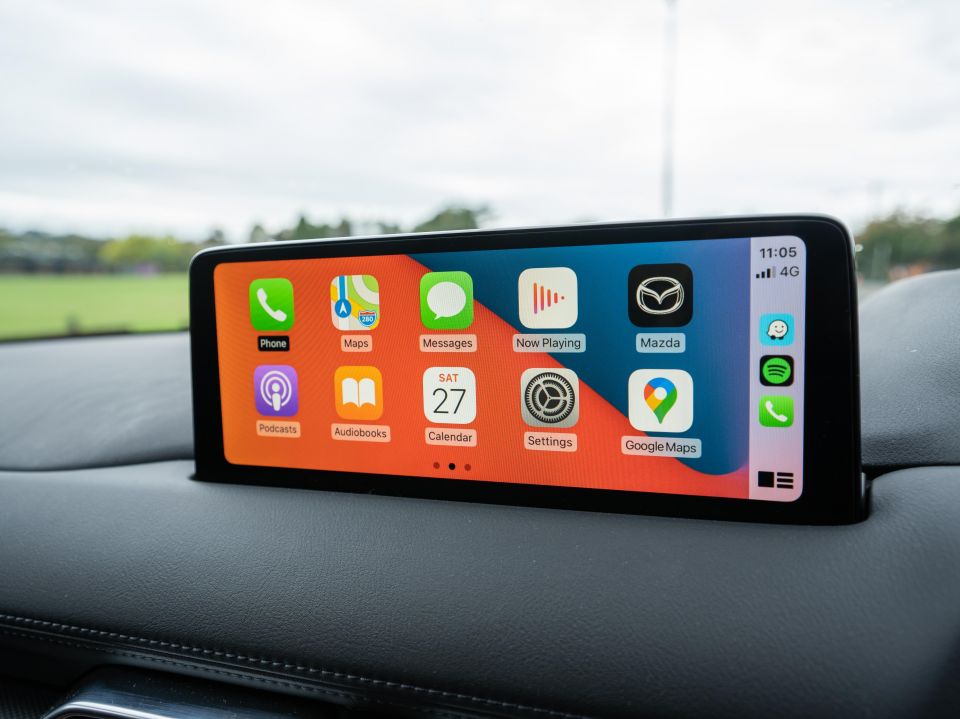
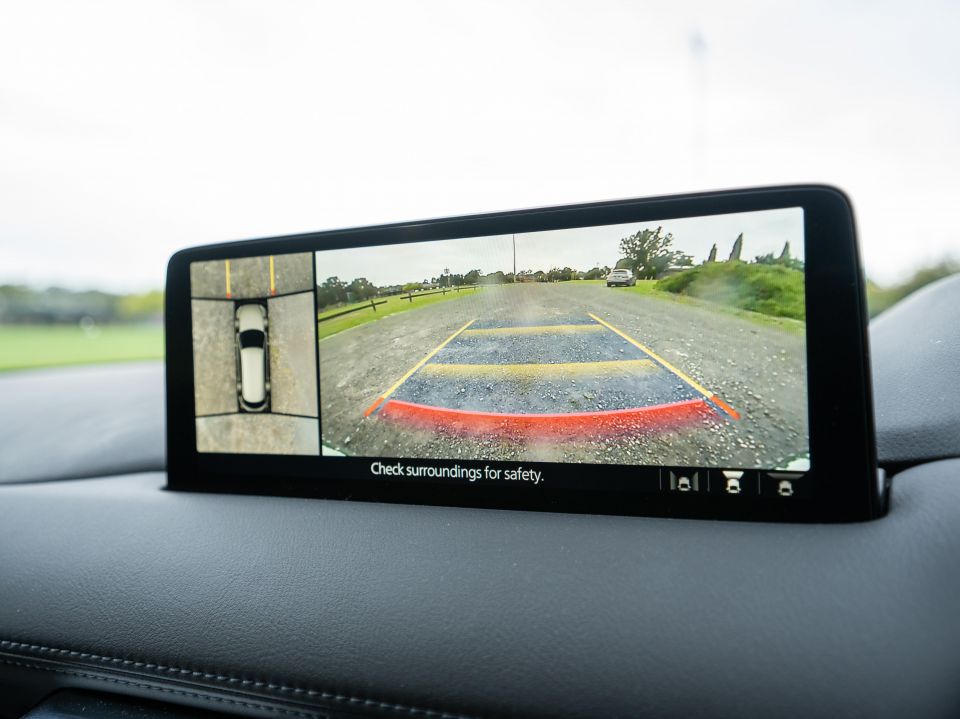

It does, however, offer quick responses and is well featured with kit such as DAB+ radio, Bluetooth phone and audio streaming as well as a user-friendly interface.
We also liked the Bose premium audio system, which with a bit of adjustment in the bass and treble settings offers bassy sound quality.
Storage up front is pretty good too, with a shelf under the centre stack big enough to store a large phone, a deep cubby under the front centre armrest, big bottle holders in the doors, and a decent glovebox.
Heated and ventilated seats are a nice touch, as is the heated steering wheel. The driver is faced with Mazda’s classy 7.0-inch supervision display that shows a virtual speedo as well as sub-menus for the trip computer, driver assist systems, and a more simplified layout with a digital speed readout.
Additionally, there’s a colour head-up display which shows speed, navigation prompts (via the inbuilt software) and assistance functions. Very nice.
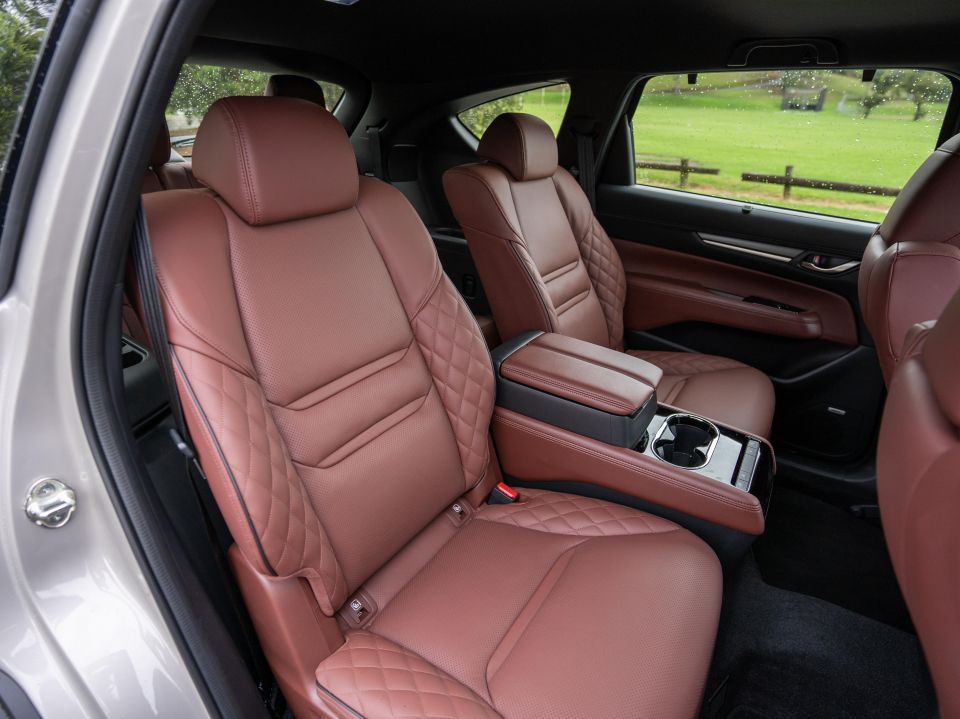
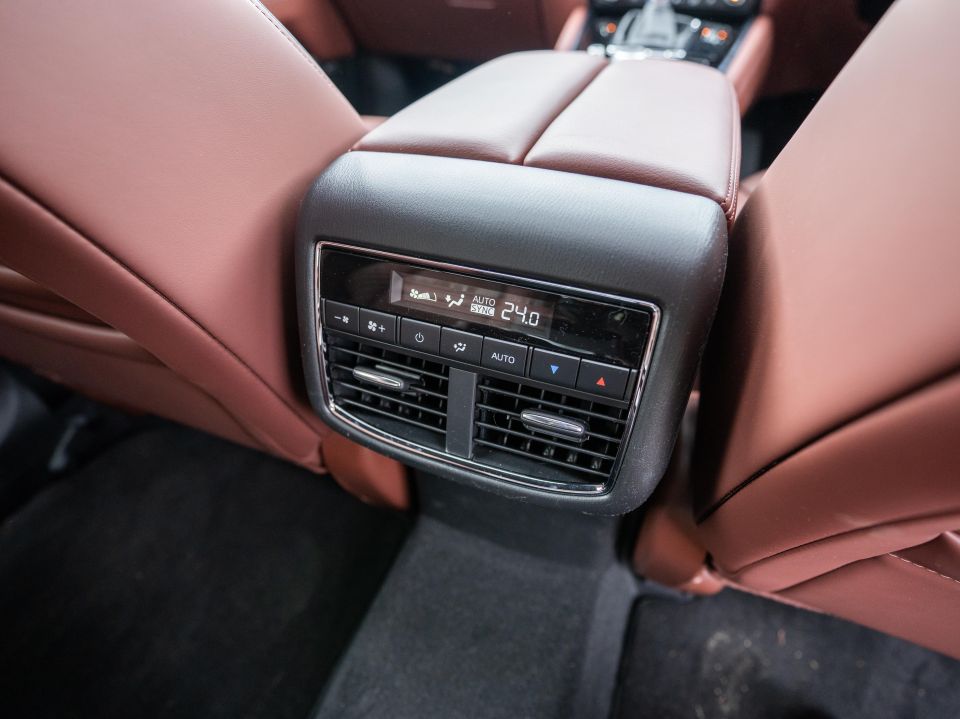
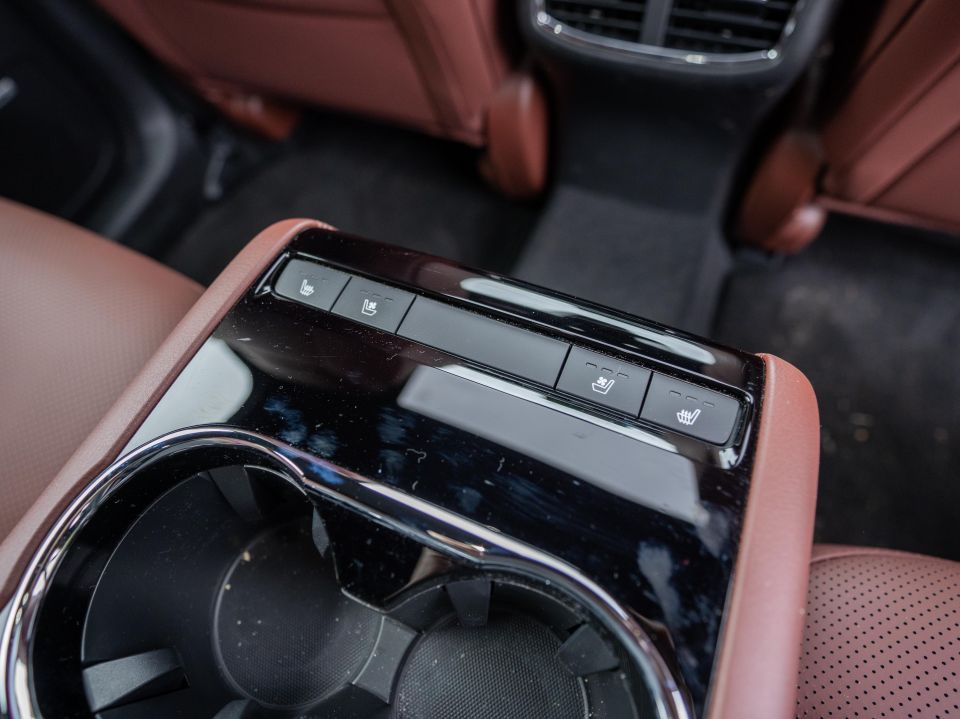
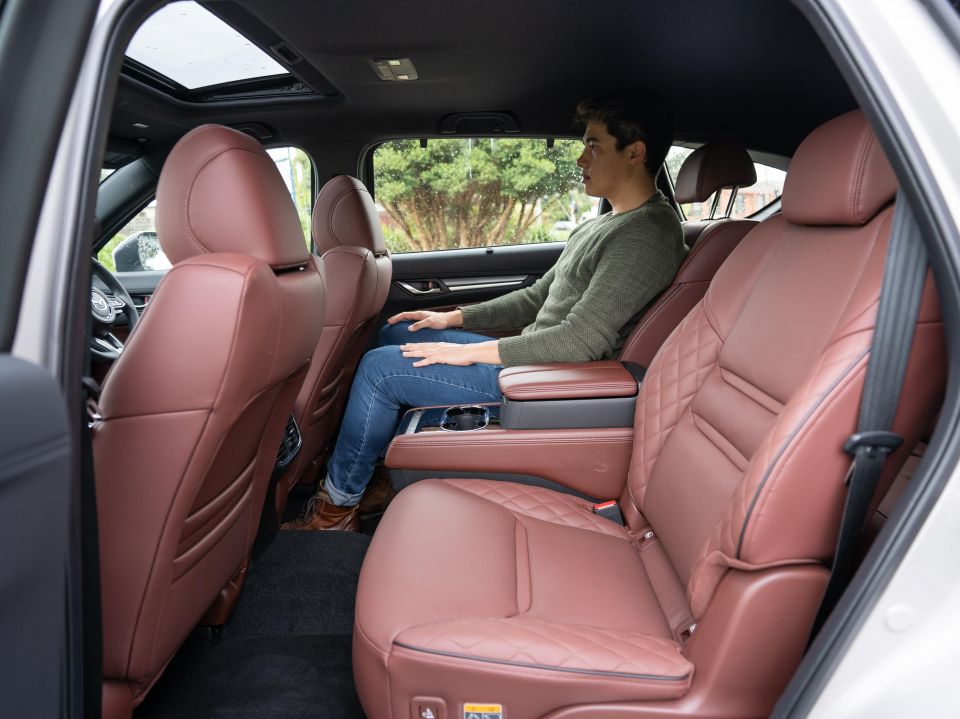
Moving into the second row, the Asaki LE gets the swish dual captain’s chairs like the CX-9 Azami LE we tested earlier this year.
They’re heated and ventilated, offer electric adjustment, and there’s a centre console bin and cupholders much like what’s available in the first row.
Again, like the front seats, the seat base is a little short if you’re long legged, and there’s not limo levels of knee and legroom like you might expect. There’s also manual sun blinds for the side windows, and ISOFIX child seat anchor points.
Additionally, there’s separate climate controls for the rear air vents.
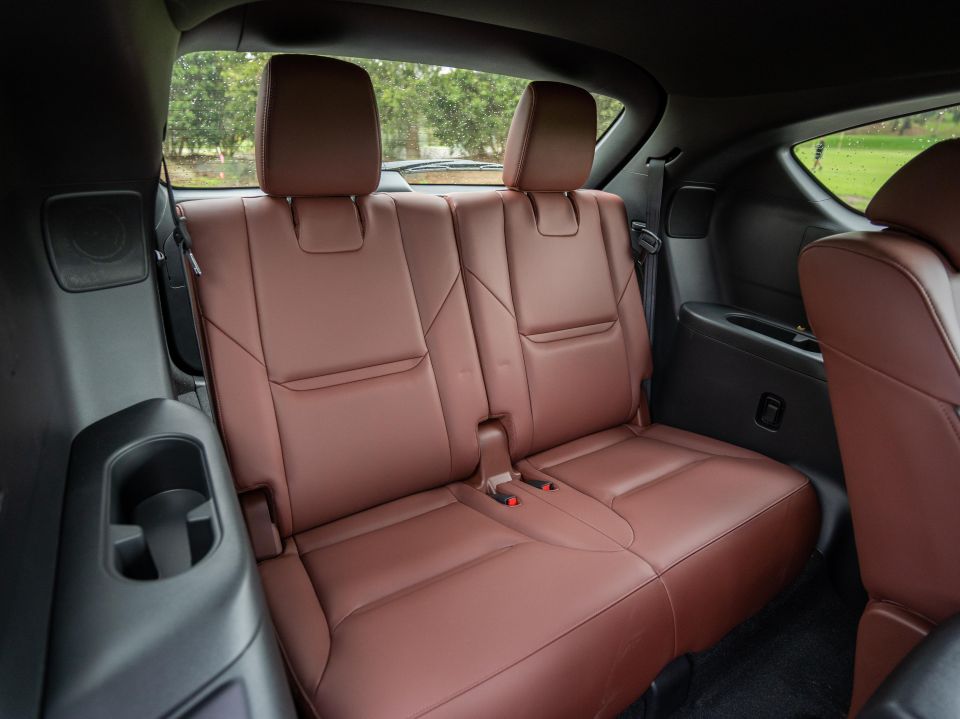

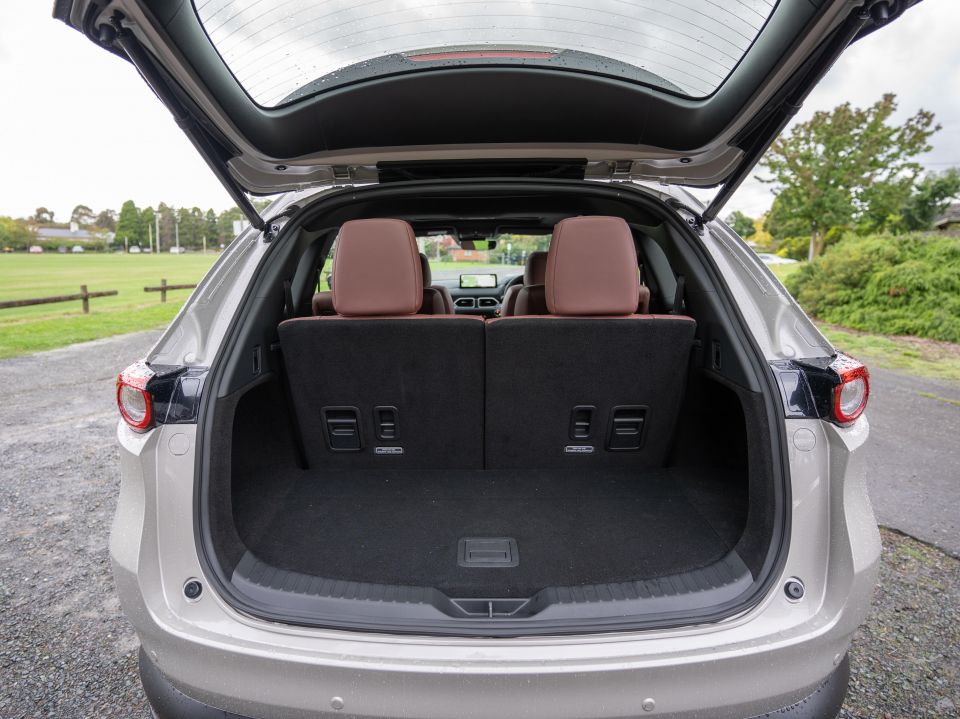
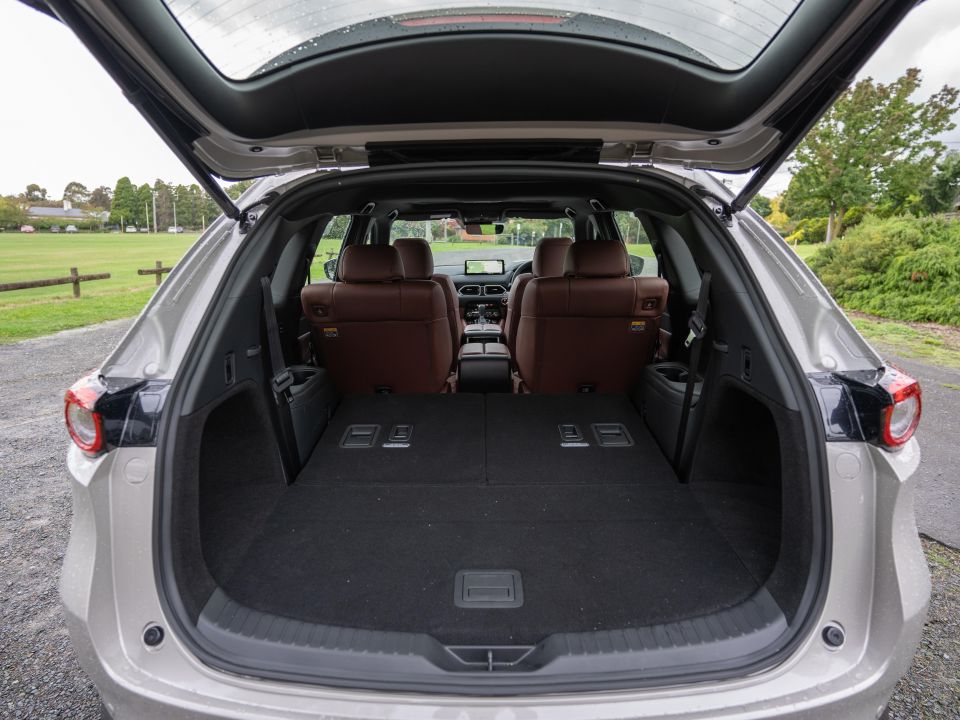
Further back again, the third row of seats is more of a kids only prospect – probably the biggest differentiator between the CX-8 and CX-9.
Where the CX-9 can comfortably sit an adult for a short or medium journeys, the CX-8 is tight for head- and knee room in particular for my six-one-ish frame.
There’s cupholders and USB charge points to keep devices topped up for the little ones, and the second-row chairs have a walkthrough function that, while intuitive in concept, is slow in practice.
With the third row in place there’s 242L of cargo space. In four-seat configuration there’s 775L – these figures include underfloor storage and are measured to the ceiling.
Under the boot floor is a space saver spare wheel.
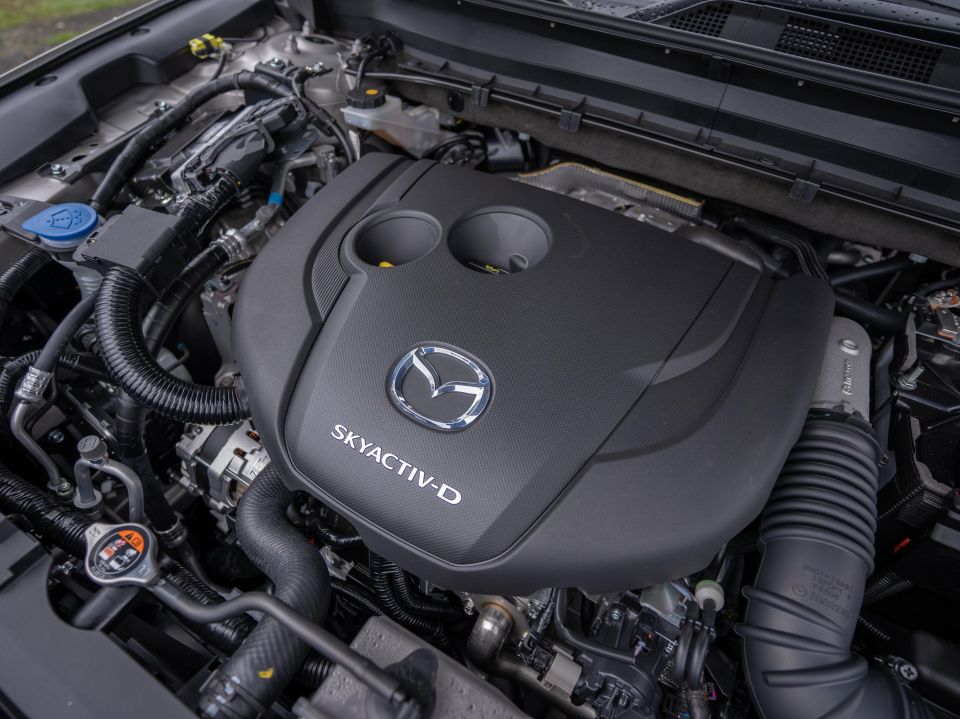
Where expert car reviews meet expert car buying – CarExpert gives you trusted advice, personalised service and real savings on your next new car.
The CX-8 Asaki LE is powered by a 2.2-litre four-cylinder twin-turbo diesel with 140kW of power and 450Nm of torque. This motor is available with either front- or all-wheel drive, with the latter standard here.
The 2021 Mazda CX-8 is also available with a 2.5-litre four-cylinder petrol engine in lower variants, making 140kW of power and 252Nm of torque. The base engine is a front-wheel drive only proposition.
Both engines are fitted with a six-speed automatic transmission as standard, as well as fuel-saving idle stop/start technology.
Claimed fuel consumption is quoted as 6.0L/100km on the combined cycle, though during our time with the CX-8 we saw mid to high sevens into low eights over a week with mixed driving including peak-hour commuting. Still not bad given the size of the vehicle and some of the traffic conditions.
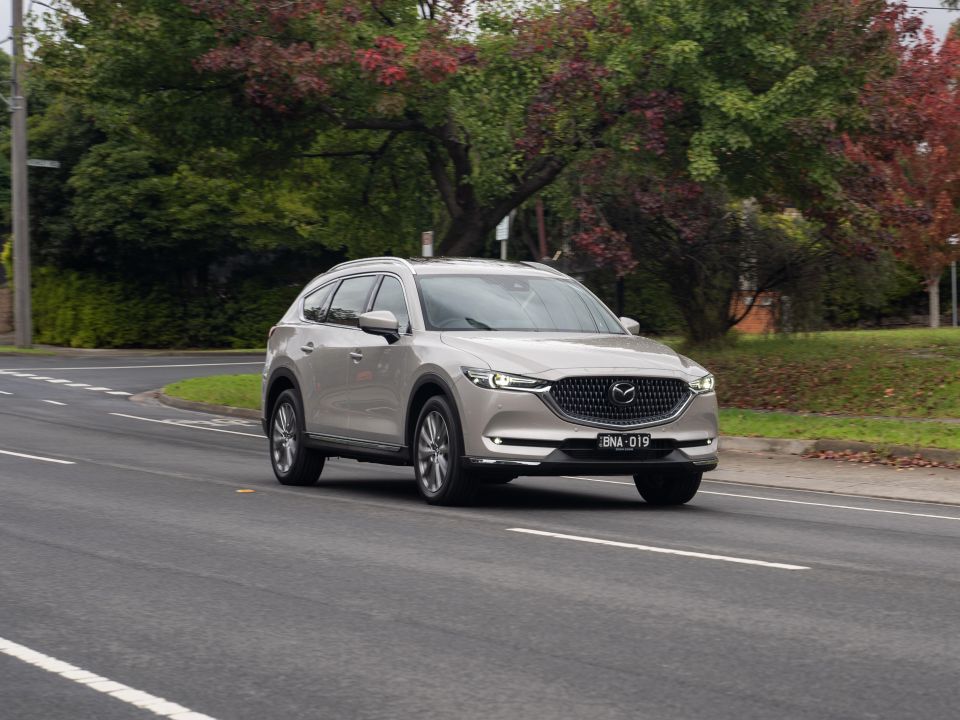
The CX-8 drives much like an elongated CX-5. Obvious? Maybe.
Despite the longer body and added weight, the CX-8 performs and handles like a smaller vehicle, and that’s largely down to the proven chassis and Mazda’s ‘zoom zoom’ philosophy.
Performance from the twin-turbo diesel is effortless and muscular from down low, meaning it is perfectly happy in town and on the highway – though given it’s an oiler you’ll want to take the odd freeway trip.
The diesel is also impressively refined at all speeds and even under load it doesn’t sound agricultural. It’s more relaxed than the 2.5-litre turbo petrol in the CX-5 and CX-9, too.
Speaking of refinement, the cabin is a quiet place to be, with minimal wind and road noise entering at speed. Over coarse-chip blacktop you might get a bit of tyre noise from the 225/55 R19 Toyo Proxes rubber, but it’s never too intrusive nor is it below the segment average.
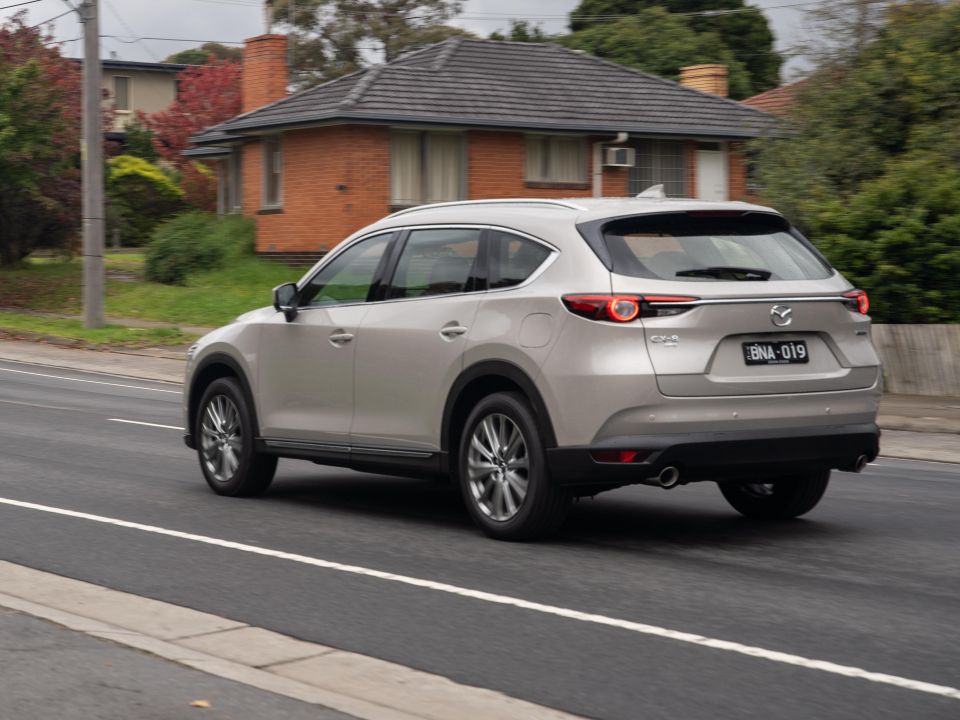
Like most Mazda products the CX-8 has a softer, more comfortable suspension tune that translates to a pliant ride even with the large wheels and low-profile tyres.
It soaks up Melbourne’s lumps and bumps pretty well, and isn’t upset by larger or sharper hits. The CX-8 certainly lives up to its premium aspirations in this regard.
The steering has a light feel but is pretty direct so the CX-8 feels responsive whether you’re navigating tight city streets and car parks or heading up a twisty mountain road. There’s a natural, progressive feel that inspires confidence when you turn the wheel.
In the bends there’s a natural level of body roll which is in line with the bulk of Mazda’s range, meaning it never feels clumsy but it doesn’t corner flat like a sports car. Even the MX-5 is like this.
With that said, the skinnier body compared to the CX-9 means the CX-8 doesn’t feel quite as hunkered down and confident as its sibling. For reference the CX-9 is 129mm wider (1840mm v 1969mm) with a circa 60mm larger track front and rear (1595/1600mm v 1663/1663mm).

The CX-8’s array of driver assistance features were put to the test throughout our loan. The adaptive cruise control was a little conservative, leaving a large gap even in its short-distance setting and being quick to brake hard when another vehicle entered the lane ahead.
While it’s better to be safe than sorry, it got a little annoying during the peak-hour commute as rude drivers would cut me off due to the large lead gap and then impatient drivers behind would tailgate if I wasn’t going the right speed.
The CX-8’s lane-keep system doesn’t offer a proper centring function like you’ll find in some new Hyundai/Kia and Toyota products, which means it doesn’t offer semi-autonomous levels of assistance on the highway. Some will like that, some will lament it.
Blind-spot monitoring and rear cross-traffic alert are handy inclusions as well given Mazda’s tendency to fit driver’s side mirrors that are hugely magnified.
Overall, the CX-8 drives like an upmarket product and focuses on comfort, which is how it should be.

The 2021 Mazda CX-8 is backed by a five-year, unlimited-kilometre warranty.
Maintenance is required every 12 months or 10,000km.
Capped-price service costs for the petrol front-wheel drive over the first five years total $1757.
The diesel all-wheel and front-wheel drive cost a combined $1885 over five years.

Buy your new car without the stress. It's fast, simple and completely free.

Great service from Travis and team, second time I have used this business would not hesitate to recommend them to anyone
Craig C.
Purchased a Ford Ranger in Sunshine Coast, QLD
CarExpert helped Craig save $7,224 on his Ford Ranger, now let us save you on your next new car.
Get your BEST priceThe Mazda CX-8 has been steadily growing in popularity over the past few months, but for the longest time was shunned for the CX-9 – not that it deserves to be.
Fundamentally, it offers the same great aspects of the CX-5 in a larger, more practical body that can accommodate up to seven, and offers almost Lexus levels of cabin quality and refinement most rivals can’t match.
It’s a little awkward-looking and some interior elements may look and feel a little old hat, but if the CX-9 is too big and thirsty for you the CX-8 will do much of the same job.
We’d recommend the seven-seat GT or Asaki models rather than the Asaki LE given the shrunken width compared to the CX-9 and the higher price of the latter variant, though in high specification the Mazda CX-8 offers a worthy alternative to the ever-popular Hyundai Santa Fe and Kia Sorento twins.
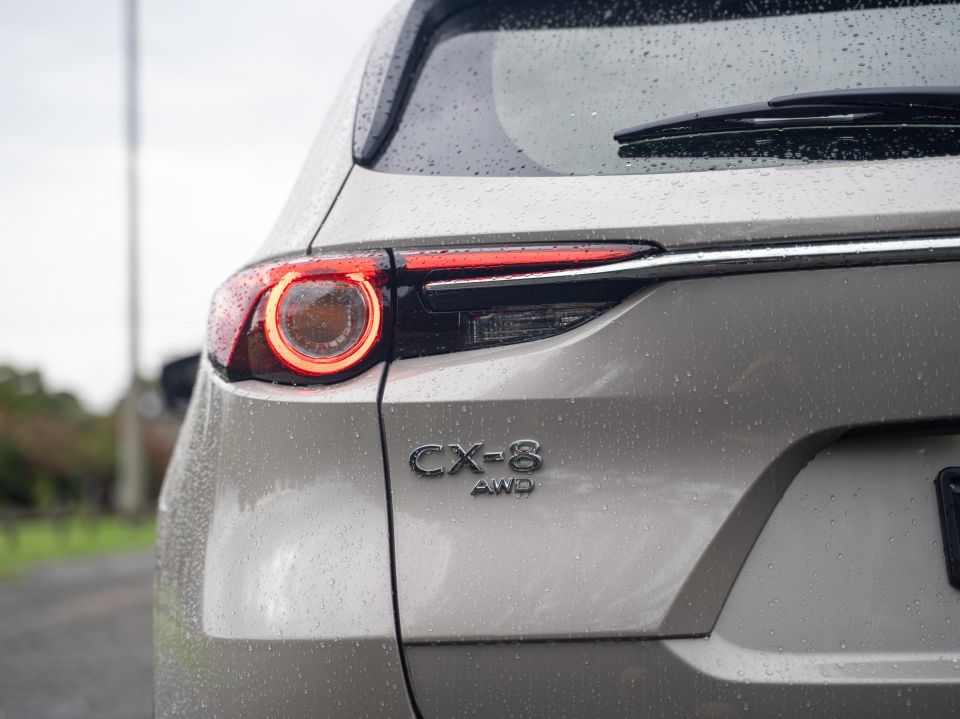
Click the images for the full gallery by Wesley Loh (@garagetribe on Instagram)
Where expert car reviews meet expert car buying – CarExpert gives you trusted advice, personalised service and real savings on your next new car.
James is an automotive journalist based in Melbourne, Australia. Before joining CarExpert.com.au in 2020, James has worked at leading auto media outlets including Carsales and CarAdvice, as well as at Pulse agency for Ford Australia's communications team. In 2019 James made Mumbrella's 'Top 20 most prolific web authors in Australia' list after publishing 1,360 articles between March 1, 2018 and February 28, 2019 for CarAdvice. James is also an Ambassador for Drive Against Depression – an Australian charity whose mission is to support mental wellness through the freedom of driving and a shared love of cars.


James Wong
5 Days Ago


Max Davies
4 Days Ago


Josh Nevett
3 Days Ago


Max Davies
3 Days Ago


Max Davies
1 Day Ago


Derek Fung
1 Day Ago